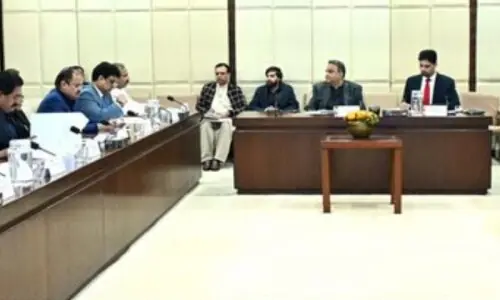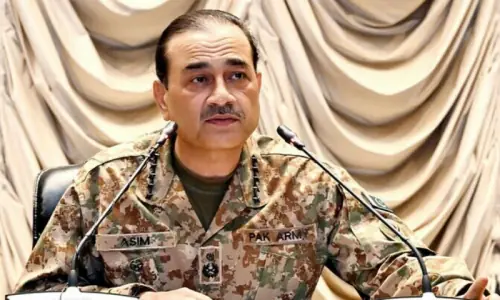RAWALPINDI: The 115-year-old Central Jamia Masjid, which still stands in downtown Rawalpindi alongside temples and churches, was built in 1903 as a symbol of Muslim unity in the Potohar region.
The mosque was built with donations by Rawalpindi’s Muslim community. The foundation stone was laid by the deposed king of Afghanistan Ayub Khan, who became a prisoner of the British during the second Anglo-Afghan wars in 1880 and lived in Rawalpindi at the time.
The mosque was completed in two years and inaugurated by the Sufi saint of Golra Sharif, Pir Mehr Ali Shah, along with King Ayub Khan.
According to the book Rawal Dais, written by former Landsdowne Trust Library librarian and historian Aziz Malik: “Friday prayer was led by Syed Mehmood Shah and Sufi Saint of Golra Sharif Pir Mehar Ali Shah along with deposed king of Afghanistan Mohammad Ayub Khan specially arrived for the inauguration of the mosque.”
Before the construction of Jamia Masjid, Mr Malik wrote, there was no central mosque in the area, although there were over a hundred mosques in the area already, including the Mian Nabi Bakhsh mosque in Purana Qila.
Muslims from the middle classes and low-income groups donated to build the mosque, and even participated in its construction as workers. According to Mr Malik, Muslim women also participated in the mosque’s construction at night.
Figures such as Maulana Zafar Ali Khan – a leader of the Pakistan Movement, Majlis-i-Ahrar founder Syed Attaullah Shah Bukhari and Maulana Anwar Shah Kashmiri visited the mosque and led prayers.
The interior and exterior of the mosque are a reflection of Mughal architecture. Minikari, a form of intricate glasswork that is commonly found in Mughal art, decorates the interior halls of the building, which remains untouched since construction.

The walls are decorated with verses from the Quran and Hadith, and the mosque has a total of 12 minarets of various sizes, and three domes.
In the main courtyard a small pond, once used for ablution, now serves as a foundation. Ablution is now performed in separately constructed washrooms.
Rooms were also constructed along the main courtyard for students to learn how to recite the Quranic and other religious study.
Separate visiting rooms at the mosque were turned into shops by the Auqaf department to generate income.
When contacted, Auqaf administrator Zahid Iqbal said the department had moved a summary to Lahore to allocate funding to renovate the building and improve its condition.
He said the mosque was an archaeological site and artisans needed to be hired to restore the old art work in the building, which the department would do after it receives funding from the provincial government.
He said commercial buildings were built along the mosque according to government policy, and the generated income is used to run the affairs of the mosque on a daily basis.
Published in Dawn, June 4th, 2018


































